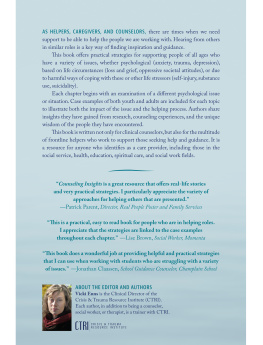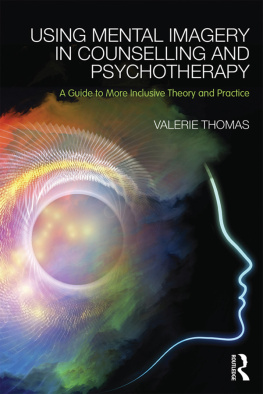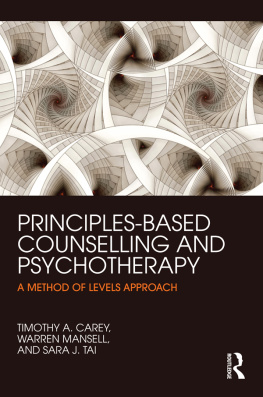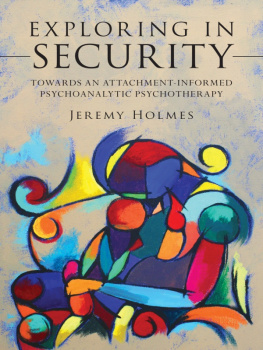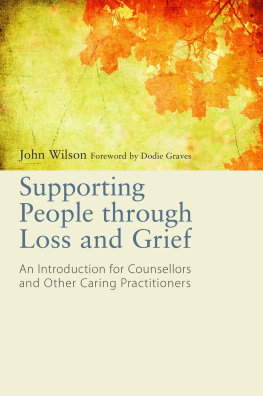White Counsellors Black Clients
To Pat, James and Ayesha
First published 1999 by Ashgate Publishing
Reissued 2018 by Routledge
2 Park Square, Milton Park, Abingdon, Oxon, 0X14 4RN
52 Vanderbilt Avenue, New York, NY 10017
Routledge is an imprint of the Taylor & Francis Group, an informa business
Copyright Nick Banks 1999
All rights reserved. No part of this book may be reprinted or reproduced or utilised in any form or by any electronic, mechanical, or other means, now known or hereafter invented, including photocopying and recording, or in any information storage or retrieval system, without permission in writing from the publishers.
Notice:
Product or corporate names may be trademarks or registered trademarks, and are used only for identification and explanation without intent to infringe.
Publishers Note
The publisher has gone to great lengths to ensure the quality of this reprint but points out that some imperfections in the original copies may be apparent.
Disclaimer
The publisher has made every effort to trace copyright holders and welcomes correspondence from those they have been unable to contact.
A Library of Congress record exists under LC control number:
ISBN 13: 978-0-367-07510-1 (hbk)
ISBN 13: 978-0-429-02110-7 (ebk)
Two aims were central to the present research: 1) to discuss and examine the existing attitudes and self-reported specific practice orientations of white psychotherapists/counsellors in their work with Black Clients; and 2) to identify what influenced the ability of psychotherapists/counsellors to work appropriately with the culturally different. Three main methods of data collection were used A postal questionnaire provided a national sample of members from the British Association for Counselling and obtained a usable sample of 360 respondents. The postal questionnaire comprised two parts. Firstly, that of a demographic data-gathering section and a five point Likert- type instrument, which formed the basis of a Cultural Awareness Inventory, to assess counsellors attitudes towards Black clients. Secondly, a video vignette rating questionnaire was used. This was also a five point Likert-type instrument. With this latter inventory, 107 counsellors in training were asked to rate their feelings and reactions to either an African-Caribbean, White English, or South Asian female client, each of which was matched on a number of variables. All clients had the same script: claiming to be distressed due to unplanned pregnancy. The third research instrument was a semistructured interview schedule with which 20 counsellors were interviewed regarding their beliefs and practice orientations with Black client groups. This research did not directly observe practice but contains specific measures of counsellors self-reported practice orientations and attitudes to practice mainly dealing with uses of interpreters and family.
The results suggest that with some self-reported practice orientations, and with some attitudes, counsellors do show measured levels of Eurocentrism and negative counter-transference. Significant gender differences were found (p<.001) in the emotional response of men compared to women towards the video vignette clients but no gender differences were found in the Cultural Awareness Inventory. The results suggest that reading and training are effective change agents in preparing counsellors for cross-cultural work. Furthermore, the counsellors ages and academic qualifications are statistically significant predictor variables of cultural awareness. The results also suggest that direct experience of working with African-Caribbean clients, but not South Asian clients, was a significant predictor variable of the score on the Cultural Awareness Inventory. Possible reasons are tentatively discussed in the context of Batson et al.s personal distress theory and Festingers cognitive dissonance theory. Recommendations are made for the training and supervision of counsellors which may suggest necessary curriculum changes to counsellor training courses.
This book addresses the Eurocentric attitudes and negative countertransference practice orientations among white counsellors who deal with black clients. Using sophisticated quantitative research methods in triangulation with detailed qualitative analysis, the author identifies a number of factors that could be helpful in the training and practice of counsellors, especially those involved in cross-cultural work.
The book opens with a review of the inadequate theorisation of cross- cultural counselling compared to the theoretical saturation of the practice of white counsellors dealing with white clients. This makes the book a timely addition to the Fanonist and feminist critique of ethnocentric distortions in earlier research and publications on difference. Nick Banks concludes convincingly that: The effect of counter-transference in [multicultural counselling relationships] may be particularly destructive if counsellors were unwilling or unable to examine their cultural prejudice and racism.
The book should be made compulsory reading for all counsellors, their clients and their trainers given that cross-cultural counselling is increasingly becoming the major context for all counselling due to the unstoppable growth of multiculturalism throughout the world. Students, researchers and teachers will also find the detailed quantitative and qualitative analyses useful in their own work even when the subject matter is different.
Biko Agozino
Liverpool
This chapter provides the reader with an overview of the area of cross-cultural counselling. The issues of counselling technique, practice and theory, empathy and rapport, the impact of racism and therapist attitude, transference and counter-transference are introduced, as well as the significance of language and cultural differences between white counsellor and Black client. The intention is to present the broad aims of the research and provide an introduction to the more frequent debates within the subject of cross-cultural counselling. A deeper analysis of the issues will take place in the thesis, as appropriate.
Verma (1985, p. 84) has noted that:
traditionally, the whole focus in inter-cultural counselling is given to deficiencies of the recipients. It is rarely suggested that the greatest barrier to meaningful interaction in the counselling relationship may be the counsellors lack of understanding of the socio-psychological and cultural background of the client.
If therapists or counsellors are to help those they encounter it is reasonable to suggest that they should have positive, or at least neutral or objective, attitudes towards those who seek their help.
This thesis will examine the attitudes white therapists have of African- Caribbean and South Asian (Indian, Pakistani, Bangladeshi) clients and how these may influence the therapeutic process. The racial and cultural context in which Black and white people exist and its potential influence on counselling or psychotherapy will be explored in the literature review. The specific aims and objectives of this research will be provided at the end of this chapter.
It is worthwhile at this point to explain how the five ethnic groups which form the basis of this study will be referred to. Skellington et al. (1992, p. 13), after an extensive search, noted that:
there is no one agreed set of terms in use among researchers in this field for different minority ethnic groups... a classification may be based on skin colour, or country of origin or descent. Terminology is also problematic because, over time, the terminology shifts: some terms fall into disuse and disrepute, while others change. Many terminological uses are controversial, and probably none is without its drawbacks.


